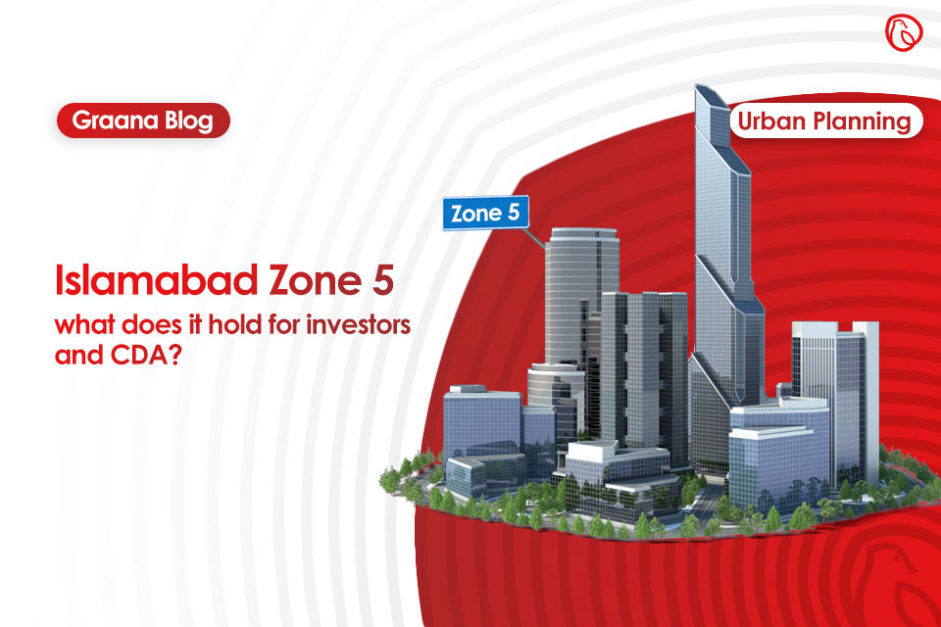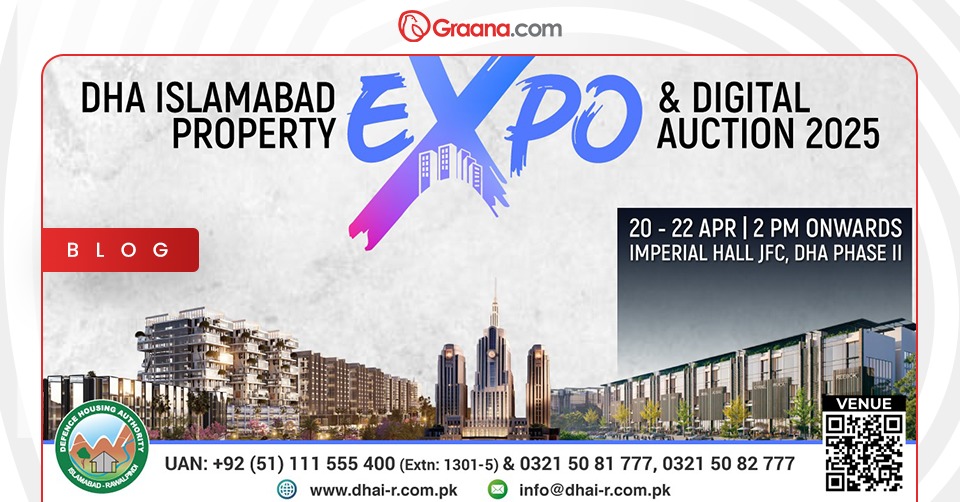Islamabad is coveted as a city all over Pakistan, not just for its beauty and the lifestyle it offers, but also because of the social and economic growth the capital promises. According to 6th Population and Housing Census 2017, Islamabad’s rural population has dramatically increased by 6.95%; while the rest of the country’s rural growth stayed at around only 2.2%. Similarly, the capital’s urban population has dropped by 15%, since 1998 Census – quite in contrast to the country’s overall rise of 3% in urban population.

I know these numbers seem surprising, though they are not. The reason behind the surprising numbers is simple. Rural Islamabad (Zones 4 and 5) had space and a promising social and economic future that attracted people from far and wide. Today, only Zone 5 houses more than a quarter million people, which is at the consistent increase. Moreover, there is every possibility that the numbers get doubled within 10 years or so.
Now, to meet the challenge of rapidly changing demographic realities in rural Islamabad (particularly Zone 5), we critically need large-scale development projects if we want to prevent informal settlements or slums from taking place. For that to happen, developers and investors have long been asking for clear and relevant CDA bylaws.

In this article, we will get to know how Zone 5 defines the social and economic future of Islamabad, and what critical role CDA bylaws play in it. Similarly, it ascertains the fact that this zone is setting a new real estate market that will benefit the end-users, bring transparency and contribute to the national economy.
Geography of Zone 5
Zone 5 lies in the south, southwest and southeast of Islamabad Capital Territory (ICT) limits. It occupies 39,029 acres of land and is extended to 157 square kilometres. In addition to Defence Housing Authority (DHA), Bahria Town sectors (Bahria Garden City and Phase 7), Jinnah Gardens, Naval Anchorage and Zaraj Housing Society, there are more than 20 residential schemes and societies in this zone.

Bahria Intellectual Village truncates Zone 5 from Rawalpindi in the south; Sangot Syedan separates it from Kahuta in the north; while Gulberg Residencia lies at the cusp of Zone 4 and Zone 5. Strategic roads in this zone are Kahuta Road, T Chowk, GT Road and Islamabad Expressway.
In addition to exceptional geography, Zone 5 is a thriving hub for social and economic activities. Therefore, it offers tremendous potential to real estate investment, both in residential and commercial project development.

Real estate investment potential of Zone 5
There are different reasons this zone has proven to be a safe haven for huge investment in the real estate sector. The primary reason of course is its strategic location. It houses three major junctions that interconnect three arterial roads – Islamabad Expressway and Kahuta Road, GT Road and Kahuta Road, and Islamabad Expressway and GT Road. The incredible logistic connectivity played an instrumental role in accommodating not only the urban expansion from the twin cities, but also from different regions of the country. To respond to increasing commercial needs, commercial development grabbed investors’ attention, and the area has since then become a lucrative real estate investment hub.
Particularly, the part of Islamabad Expressway between Soan Gardens and T-Chowk is generally termed as ‘The Golden Patch’ or ‘The Next Blue Area’ due to exponential growth in both commercial and residential activities. The zone houses more than 10 mega commercial projects (both complete and developing) including Giga Mall, Silk Mall, D Mall, Bahria Paradise, Aquatic Mall, Builders Mall, Amazon Mall, Al-Ghani Mall, and S Abdullah that cater to the socio-economic needs of the twin cities in general, and of Bahria Town and DHA in particular.
Secondly, Bahria Town and various other housing schemes launched different residential projects that provided the lifestyle of sectoral Islamabad within a relatively low budget. Therefore, the population grew, and so did the investment potential of this zone. Consequently, rental and purchase rates of real estate properties showed a gradual increase over the past few years. The investors grabbed the moment and started pouring huge investments into residential and commercial products.
Thirdly, major infrastructural projects, including the expansion of Islamabad Expressway and Rawalpindi Ring Road, are set to change the outlook of the region. The government has planned to establish industrial zones, housing societies and education cities along the 38-kilometre long Ring Road. Similarly, the expansion of the signal-free expressway will bring economic worth to a number of housing projects. Both the initiatives will eventually improve road transport efficiency between the twin cities, that is to positively impact real estate market.
Moreover, according to the World Population Review, the urban population in Islamabad is expected to rise by 2% every year; most of which is likely to settle in Zone 5 for two reasons. One, the zone has the capacity to accommodate a further population inflow; and secondly, due to increasing real estate activity, its social and economic potential has considerably increased. Multi-purpose shopping malls, community centres and lavish residential projects have attracted more people than ever.
Lastly, as discussed, developers have brought some very interesting investment ideas into life through commercial projects. For instance, these projects provide 100% refund opportunity, handsome monthly yield, and promised yearly appreciation. Therefore, their popularity among low and middle-income families is gradually increasing. Since the demand for such ideas has increased, developers have got into a very healthy competition of showcasing bigger, unique and worthwhile ideas. Surprisingly, such initiatives largely take place in rural Islamabad; particularly Zone 5, which has become a test-bed for such experimentation. We can see Amazon-themed malls, aquarium-based concepts, Arabian architecture, and purpose-specific malls here. Since such projects are generally considered secure and profitable, by virtue of their unique business model and outlook, local and international investors take immense interest in it.
But having potential only will not consummate into something good unless complimented by practical measures.
How to capitalise on the potential of Zone 5?
By-laws
To capitalise on the strategic value and potential of Zone 5, it is mandatory that CDA takes some bold decisions. As discussed, though Zone 5 is almost equal to Zone 1 area wise, it brings far greater investment potential. On the other hand, it has yet to get high order facilities. From social living perspective, although the entire Islamabad has only 54% people who get piped water, the residents of Zone 4 and 5 are the most vulnerable. There is no robust mechanism for ensuring provision of major amenities in the area. Town planners argue that CDA specifies 100 acres as the minimum area for any housing scheme but remains silent on the maximum cap. Consequently, housing schemes keep on expanding horizontally, while altogether ignoring the hierarchy of settlement. It results in deteriorating municipal issues of waste management and sewerage system.
Secondly, Zone 5 has no relevant and comprehensive by-laws for commercial real estate development. Investors often raise a concern that in the absence of CDA bylaws, they shy away from investing even in much needed projects. If some of them develop projects, CDA discourages the public from investing in them through frequent public notices. It consequently develops a sense of insecurity among real estate investors, whose eventual yet negative impact is being borne by the real estate sector. As a developing country that is longing to receive foreign investment, we cannot afford to lose it just because of the unavailability of CDA bylaws. There must be transparent and comprehensive regulations informing what, where, how, and when something could be developed. Rules should be subject to appropriate change when circumstances require – not other way round.
Revised Master Plan
In addition to bylaws, it is hoped that the revised master plan for Islamabad will have considered the changing social and economic realities of the zone. It is no more an area that should be kept reserved for small housing colonies. We need rigorous planning to accommodate the growing population by moving them to high-rises. As for high-rises, CDA needs to draft and implement bylaws on an urgent basis. It is a positive step that CDA has started forming bylaws for vertical development in some areas of Islamabad in the recent past. It is expected that this will be extended to the rest of the city, and subsequently, to the entire country.
Automation of Map Approval in Islamabad
Similarly, the process of issuing NOCs for a project’s map approval, construction, completion and others should be properly streamlined. One of the issues being faced by project developers in Zone 5 is the delay in getting relevant permits. Potential buyers resort to the CDA website or other sources to verify the legal status of any project before making any investment. Now, since the process of issuing NOCs is not proactive, it leaves a number of projects in limbo; resultantly, buyers feel they are being pushed away.
The government’s vision for automating the process of approving building maps is appreciable. If implemented, the developer would be required to submit the project layout/plan/map online and get a response. It will minimise human involvement and help make the project development cycle effective. At the same time, we can achieve ease of doing business. Currently, any investor in Pakistan is required to obtain as much as 17 NOCs from multiple departments to register and activate a business, which is undoubtedly one of the reasons that keep us away from international investors.
Connecting Zone 5 with Sectoral Islamabad
Zone 5 has an estimated population of over a quarter million. The residents use Islamabad Expressway to reach sectoral Islamabad for jobs, studies, and other activities. The only expressway is already overburdened and rough at different places, which troubles the daily commuters. Fortunately, the federal government has announced a package of Rs10 billion to expand and renovate the arterial road, which is expected to alleviate the commuting problems of the Zone 5 dwellers. However, as the zonal population is at the rise, Islamabad Expressway may not efficiently take over the entire burden. Therefore, a mass transit system along Islamabad Expressway will probably give much better results; which arguably has two reasons: one, the traffic inflow to Islamabad will be reduced, resulting in less air population and traffic fatality; two, not everyone can afford personal transport. The existing public transport on the expressway is neither helpful for the people nor for the environment. Instead, a metro line could be an effective alternative. It is a cheaper and comfortable transport for the public and a profitable and eco-friendly source of revenue for the government.
Basic Amenities for Islamabad Zone 5
As discussed, the zone is a thriving hub for real estate development. Therefore, population influx to this region is something inevitable. However, basic municipal arrangements and amenities are yet to get in step with the massive development. The region requires a well thought out plan for waste management, sewerage disposal, carpeting of roads, water and gas supply, and most importantly, security.
The future of Islamabad depends on how effectively it manages non-sectoral zones. To do it efficiently, the government needs to ensure that these zones have their own social, economic and educational facilities and opportunities. The less they rely on sectoral Islamabad, the more progressive they become. For instance, all major educational institutions, shopping centres, corporations and government offices are located in Zone 1, and we hardly find any of these in the rest of Islamabad. What if we create job opportunities for these zones at their doorstep? For any such idea to materialise, the first thing that is required is policies and bylaws. To launch mega residential, commercial and corporate projects will never be an issue if we have relevant bylaws in place, as it is the only thing that gains investors’ trust.




